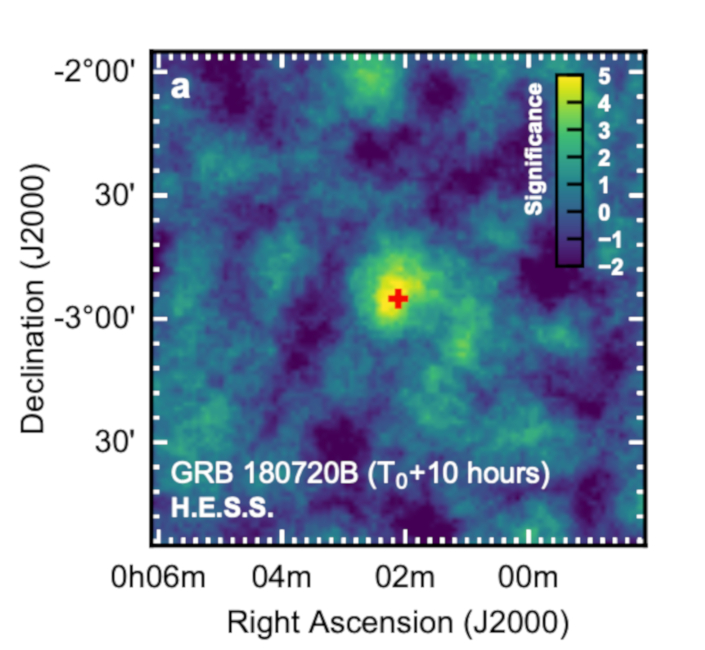
 Credit: H.E.S.S. Collaboration
Credit: H.E.S.S. Collaboration
How High?
Stellar mass black holes are born from extremely powerful explosions marked by the emission of high-energy gamma-ray radiation. Some black holes are born from the collapse of very massive stars after their nuclear fuel runs out, while some are produced by the mergers of already-collapsed neutron stars. These powerful bursts of gamma-rays can be detected by space-based telescopes like the Fermi Gamma-ray Space Telescope, The Neil Gehrels Swift Observatory, the CALET instrument on the International Space Station, and other facilities. It's not known how much energy these gamma-ray bursts can release, but the image above significantly raises the bar. This image was obtained by the 28-meter telescope of the High Energy Spectroscopic System (or H.E.S.S), a set of optical telescopes located in Namibia. How can a ground-based optical telescope detect high-energy gamma-ray radiation? When high-energy gamma-rays from a gamma-ray burst hit the earth's atmosphere, they produce sub-atomic particles which move faster than light can move through the atmosphere (but not faster than light can move in a vacuum, the ultimate speed limit). These super-fast moving particles produce a blue glow known as Cherenkov radiation. H.E.S.S detects this blue glow, and can determine the position of the incoming gamma-ray and infer its energy. In July 2018, H.E.S.S.'s largest telescope detected a gamma ray produced by a burst known as GRB 180720B. The H.E.S.S source, marked by the cross in the image above, shows extremely high energy radiation produced between 10 and 12 hours after the burst occurred. This is the first gamma-ray burst to be detected in this very-high-energy band. The burst itself only lasted 50 seconds, so it's a big surprise how this burst could have produced such extreme radiation so long after the burst occurred.
Published: December 9, 2019
<
HEA Dictionary ● Archive
● Search HEAPOW
● Other Languages
● HEAPOW on Facebook
● Download all Images
● Education ● HEAD
>

Each week the HEASARC
brings you new, exciting and beautiful images from X-ray and Gamma ray
astronomy. Check back each week and be sure to check out the HEAPOW archive!
Page Author: Dr. Michael F. Corcoran
Last modified Tuesday, 27-Feb-2024 10:15:16 EST


